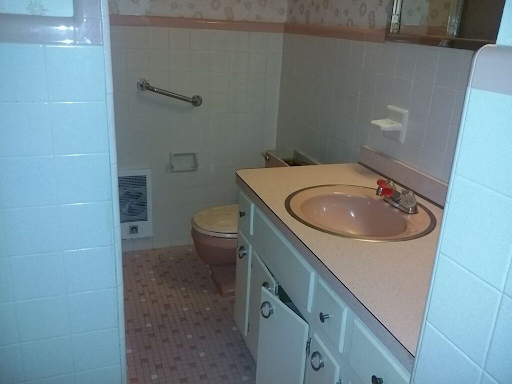Non-profit organizations are at the forefront of transforming communities by actively rehabilitating Real Estate Owned (REO) properties. These properties, commonly acquired by financial institutions through foreclosure processes, have a detrimental impact on neighborhoods, including blight, declining property values, and increased crime rates. In response, non-profit organizations take on the vital role of revitalizing these distressed properties, infusing communities with renewed energy, and fostering positive change.
REO property rehabilitation is essential to combat these properties’ adverse effects on neighborhoods. By acquiring, renovating, and repurposing them, nonprofits bring about a transformation that goes beyond mere physical improvements. They create safe, habitable spaces that instill pride in residents and attract further investment. Moreover, non-profit organizations often prioritize creating affordable housing options within REO properties, addressing the pressing issue of affordability and ensuring access to quality homes for low-income individuals and families. Contact reo contractors for more information!
Understanding REO Properties and Their Impact on Communities:
A. Definition and Causes of REO Properties: REO properties are homes or properties repossessed by financial institutions due to mortgage default. They result from various causes, such as economic downturns, unemployment, or financial crises. When left unaddressed, REO properties become burdens on communities, perpetuating cycles of decay and blight.
B. Negative Effects on Communities: These distressed properties harm communities. They can become eyesores, dragging down property values and discouraging investment. Abandoned or poorly maintained REO properties attract criminal activities, further destabilizing neighborhoods and fostering an environment of insecurity.
C. The Need for Rehabilitation: Rehabilitating REO properties is crucial to reversing their negative impact. By revitalizing these properties, communities can experience renewed pride, increased property values, and improved quality of life. Non-profit organizations play a crucial role in meeting this need.
The Role of Non-Profit Organizations in REO Property Rehabilitation:
A. Acquisition of REO Properties: Non-profit organizations acquire REO properties through various channels, such as partnerships with financial institutions or direct purchases. They negotiate favorable deals or receive property donations, enabling them to take ownership and embark on the rehabilitation process.
B. Property Rehabilitation and Renovation: Once acquired, non-profits invest in renovating and rehabilitating REO properties. The goal is to transform these properties into safe, habitable, and aesthetically pleasing homes. This process involves repairing structural damage, addressing code violations, upgrading amenities, and enhancing energy efficiency.
C. Affordable Housing Initiatives: Non-profit organizations often prioritize creating affordable housing opportunities within REO properties. By offering affordable rental units or facilitating homeownership through subsidized programs, they address housing affordability challenges and ensure access to quality housing for low-income individuals and families.
D. Community Engagement and Empowerment: Non-profit organizations actively engage with the communities they serve throughout the REO property rehabilitation process. They involve residents in decision-making, seek their input, and provide opportunities for skill development and employment. By empowering community members, nonprofits foster a sense of ownership, pride, and collective responsibility for transforming their neighborhoods.
Impact on Communities:
A. Improved Property Values: The rehabilitation of REO properties by non-profit organizations leads to increased property values in surrounding areas. The revitalization of once blighted properties positively influences market conditions, attracting potential buyers and encouraging further investment in the community.
B. Crime Reduction: By transforming abandoned or neglected properties into well-maintained homes, non-profit organizations contribute to a safer environment. Rehabilitated properties discourage criminal activities, reducing crime rates and fostering a sense of security among residents.
C. Enhanced Livability: The rehabilitation efforts of nonprofits enhance the overall livability of communities. Through the provision of safe and affordable housing options, residents experience improved living conditions, leading to greater stability, better educational outcomes, and improved overall well-being.
D. Economic Development: Transforming REO properties by non-profit organizations stimulates community economic development. The rehabilitation process creates job opportunities, supports local businesses, and attracts new investments.
Challenges and Opportunities:
A. Funding and Resource Constraints: Non-profit organizations often face challenges securing adequate funding for property acquisition, rehabilitation, and ongoing maintenance. They rely on grants, donations, and partnerships to bridge funding gaps. Exploring innovative financing models and advocating for increased public and private support can help address these constraints.
B. Collaboration with Financial Institutions and Government Entities: Establishing effective partnerships with financial institutions and government entities is essential for accessing REO properties and leveraging resources. Non-profit organizations must navigate bureaucratic processes, build relationships, and advocate for streamlined procedures to facilitate collaborative efforts.
C. Community Buy-In and Support: Gaining community support and buy-in for REO property rehabilitation can sometimes be challenging. Non-profit organizations must engage in open and transparent communication, address concerns, and demonstrate the long-term benefits of their efforts to foster trust and cooperation within the community.
Conclusion
Non-profit organizations play a pivotal role in transforming communities by rehabilitating REO properties. By acquiring, renovating, and creating affordable housing options, they address the negative impact of blighted properties, improve property values, reduce crime rates, enhance livability, and stimulate economic development. Through community engagement and empowerment, nonprofits foster a sense of ownership and pride among residents, resulting in long-lasting community transformation. Despite challenges such as funding constraints and the need for collaboration, non-profit organizations continue to make a significant difference in revitalizing neighborhoods and creating vibrant, sustainable communities for all.
You may also like
-
Looking for a Furnished Apartment in The Garden? Touchwood Real Estate Has You Covered
-
Easy Installment Plots in Karachi A Smart Way to Own Land
-
Discover La Jolla: Your Oceanfront Paradise in San José del Cabo
-
Home Inspection Services in Celina TX-Protecting Your Investment
-
Breathe Cleaner Air with Professional Air Duct Cleaning in Rochester, NY

